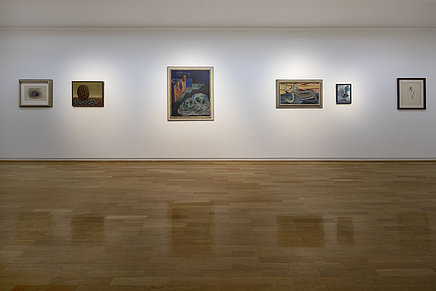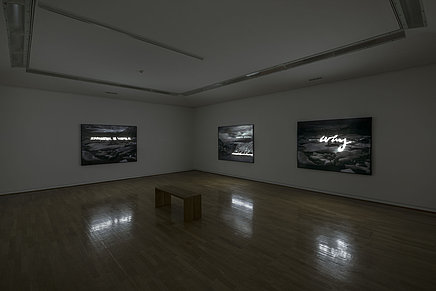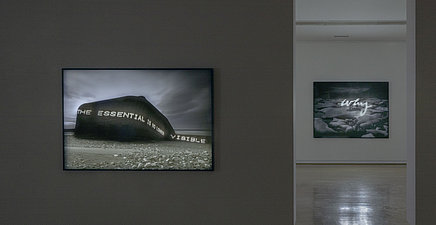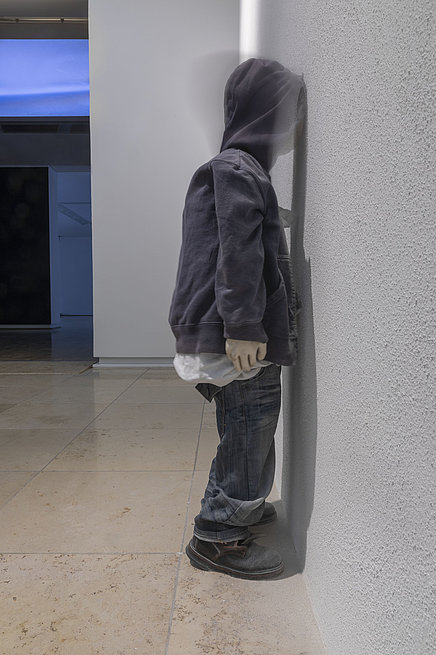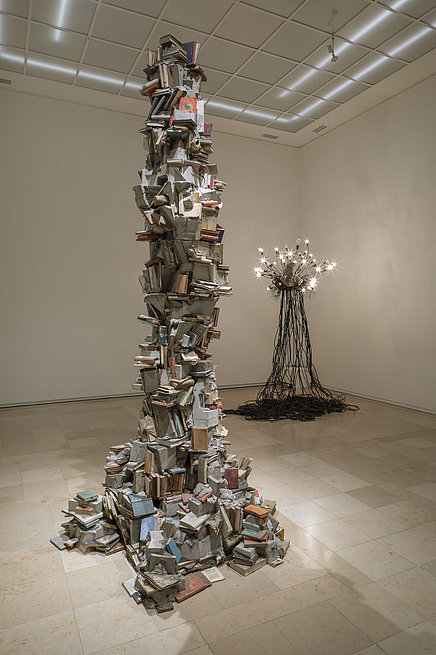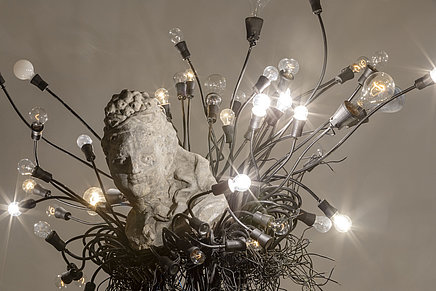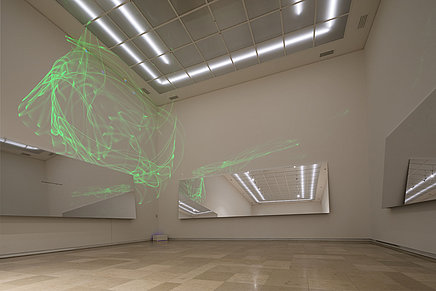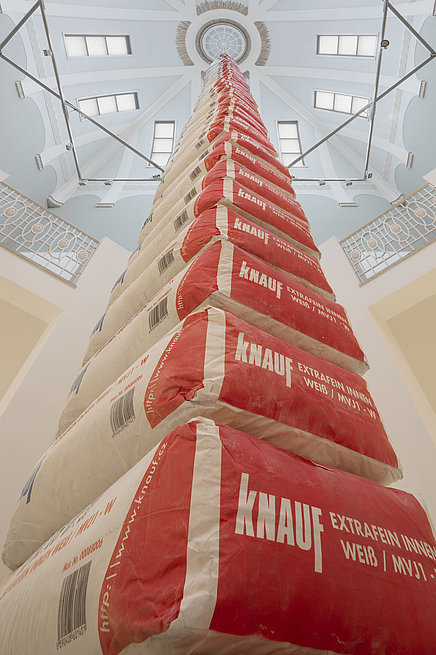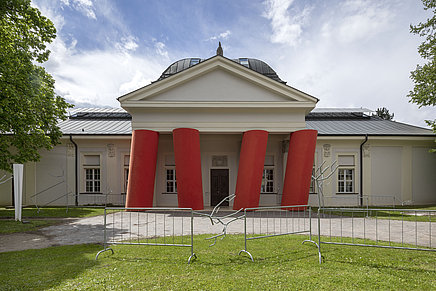Borders in Art
Czech Art in Three Generations
May 21 to August 15, 2021
This exhibition brought together three artists’ positions that have never before been face to face in this constellation: the painter and graphic artist Toyen (1902–1980) and the conceptual artists Magdalena Jetelová (b. 1946) and Krištof Kintera (b. 1973). Each of their lives is anchored in the checkered history of the former Czechoslovakia or today’s Czech Republic. The three outstanding artists represented three generations of Czech art from the 1920s to the present. The exhibited works spaned an arch across three generations, political changes, and national borders.

Catalog
The first generation was represented by Toyen (1902–1980). The artist Marie Čermínová, who chose the gender-neutral pseudonym for herself, developed her poetic, abstract visual language between Prague and Paris. She moved to Paris for the first time with Jindřich Štyrský (1899–1942) in 1925. There the two artists developed an independent stylistic movement: Artificialism. After returning to Prague they were involved in the 1930s in the founding of the Surrealist movement in what was then Czechoslovakia. Shortly before the Communists took power, Toyen fled back to Paris in the later 1940s.
Magdalena Jetelová (b. 1946) questions borders of all kinds; the overstepping and overcoming borders runs through her entire oeuvre. She was marked by the experience of Europe divided, which she experienced as isolation and a lack of political freedom in the Socialist Czechoslovakia of the 1970s and 1980s. Finally, in 1985 she fled to Germany. Since then she has increasingly dedicated herself to universal themes. With the aid of laser beams she draws and rights directly into the landscape and makes the invisible visible. Her records her projects with photography and film. Specially constructed light boxes enable visitors to the exhibition to experience the effect of the laser beam as well.
Krištof Kintera (b. 1973) belongs to a generation that did not itself experience borders as a concrete obstacle. His artistic career started in the early 1990s. The fall of the Iron Curtain opened the country up to the West and a new era of freedom and democracy. Kintera describes himself as a sculptor. He creates his material from an extensive storeroom of worn-out everyday objects, which he awakens to new life in his laboratory-like studio. By means of integrated mechanics several of his sculptures move or speak. His only supposedly real world of objects disturbs the viewer. It is familiar yet alien. Reality and illusion ultimate mix thanks to the use of irony, the grotesque, and exaggeration.
The Idea and Concept of the Exhibition
The Kunstforum Ostdeutsche Galerie developed the idea and concept of the exhibition by taking up a suggestion from the Grenze/n in nationalen und transnationalen Erinnerungskulturen zwischen Tschechien und Bayern (Border/s in National and Transnational Cultures of Memory between the Czech Republic and Bavaria). This interdisciplinary research association is supported by the Universities of Regensburg and Passau, Charles University in Prague, the Jan Evangelista Purkyně University in Ústí nad Labem, and the head of cultural affairs for the Bohemian states at the Adalbert Stifter Verein.

Film zur Ausstellung "Grenzen in der Kunst. Tschechische Kunst in drei Generationen"
Toyen, Magdalena Jetelová und Krištof Kintera – als VertreterInnen von drei Künstler-Genrationen prägen und prägten sie über ein Jahrhundert die tschechische Kunst. Welche Rolle die verschiedenen Aspekte von „Grenzen“ und „Grenzüberschreitungen“ in der Kunst der zwei Künstlerinnen und des Künstlers spielt, veranschaulicht der Film, der anlässlich der Ausstellung „Grenzen in der Kunst“ entstanden ist. Sie finden den Ausstellungsfilm zusammen mit einem Textbeitrag im Blog des wissenschaftlichen Portals Copernico, das sich auf die Geschichte und kulturelles Erbe im östlichen Europa spezialisiert.
